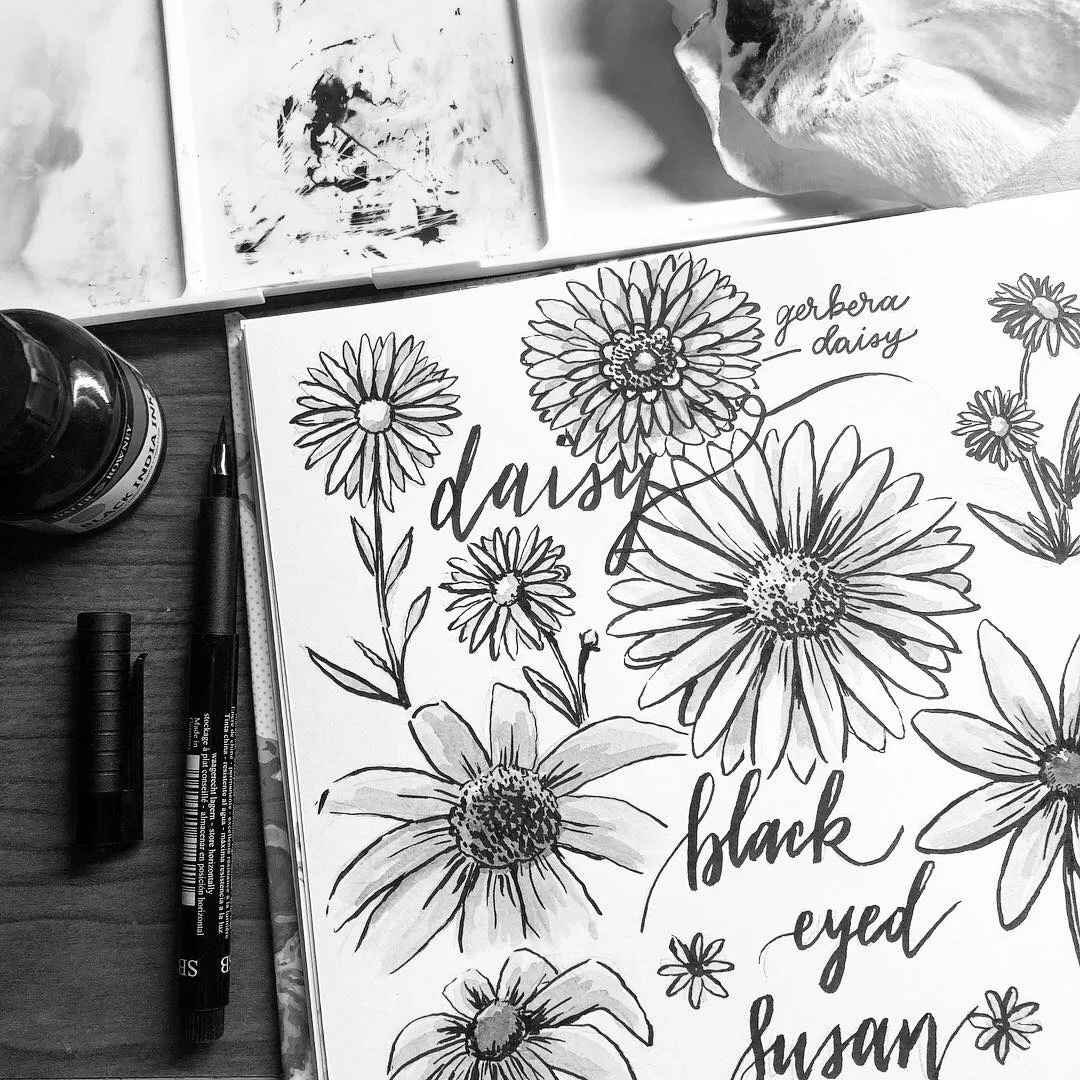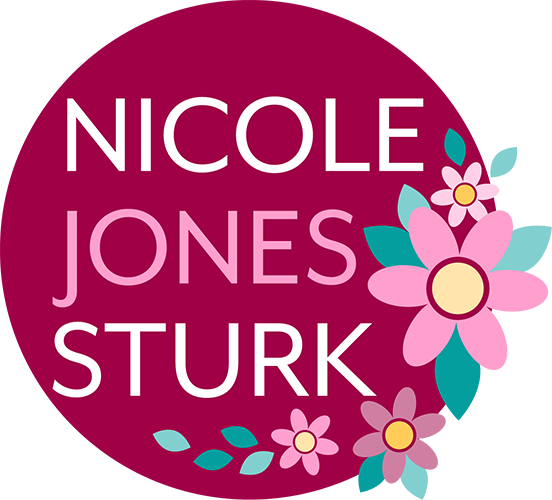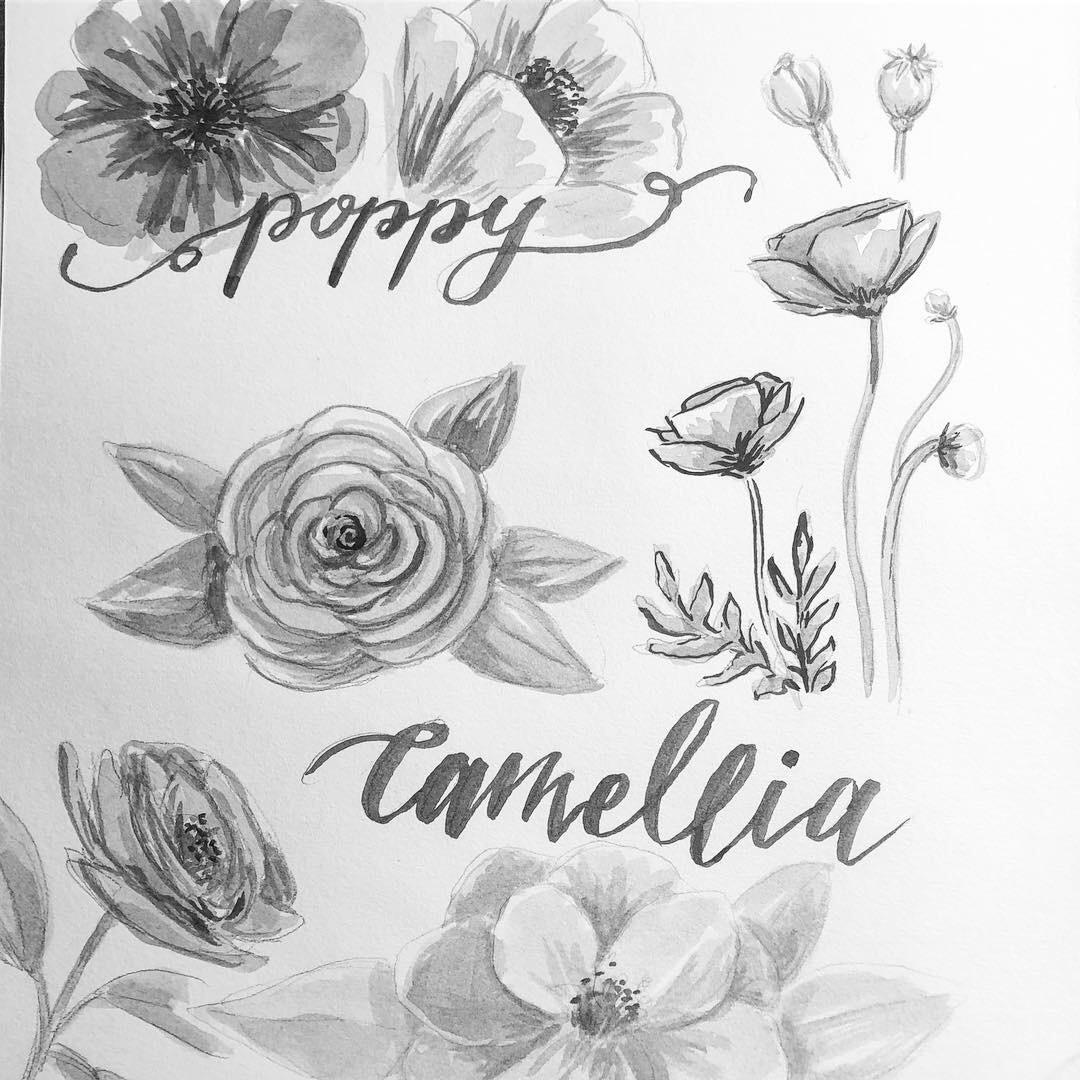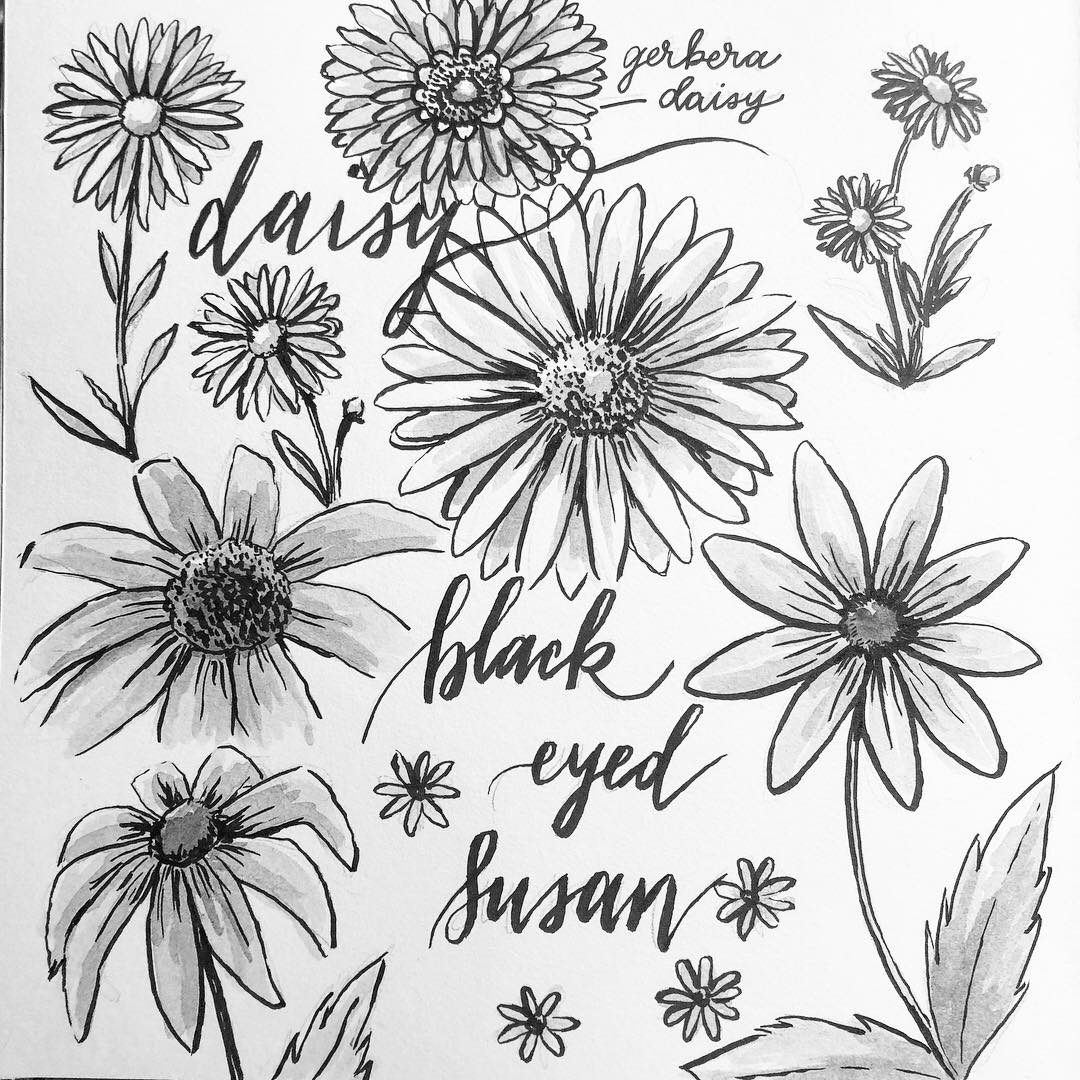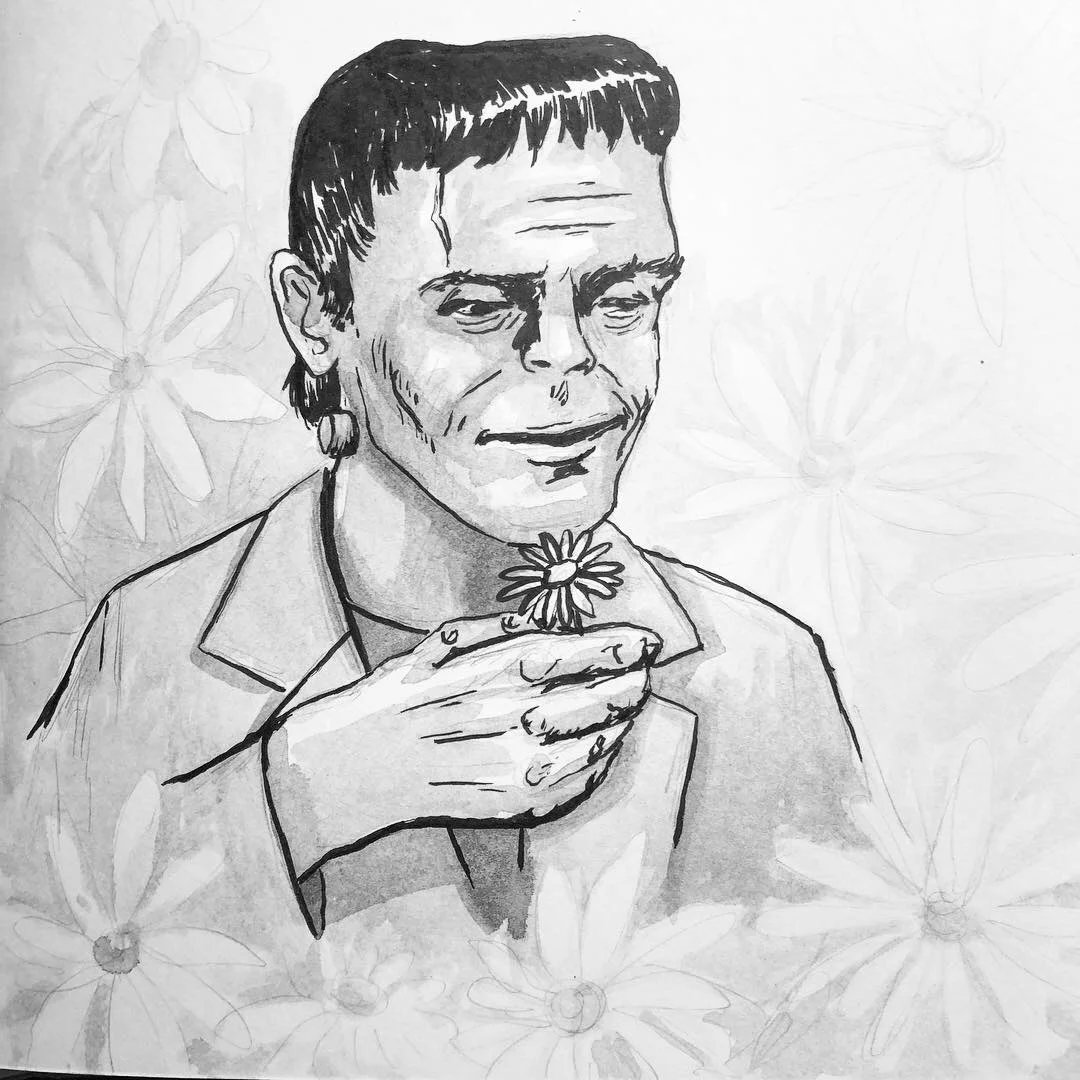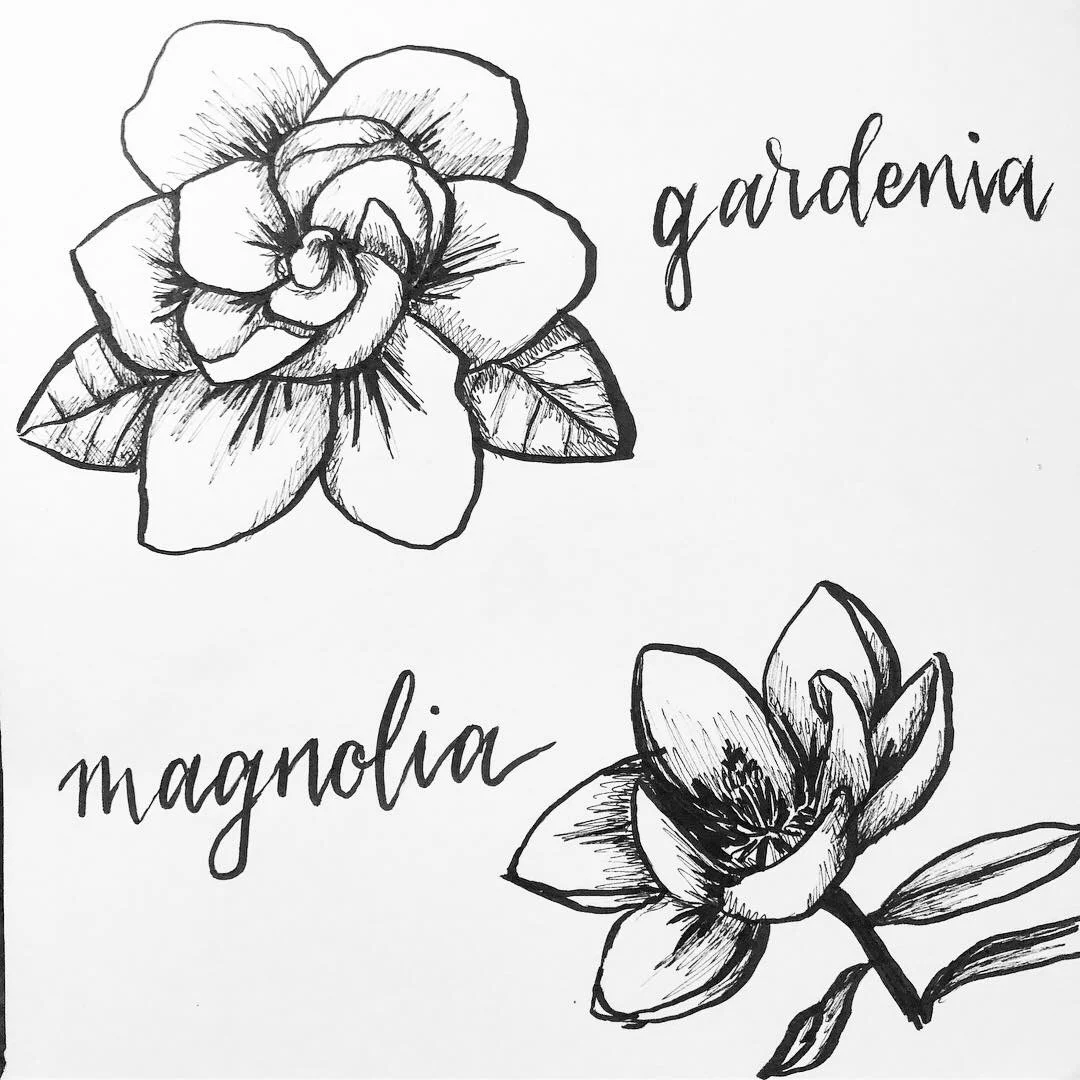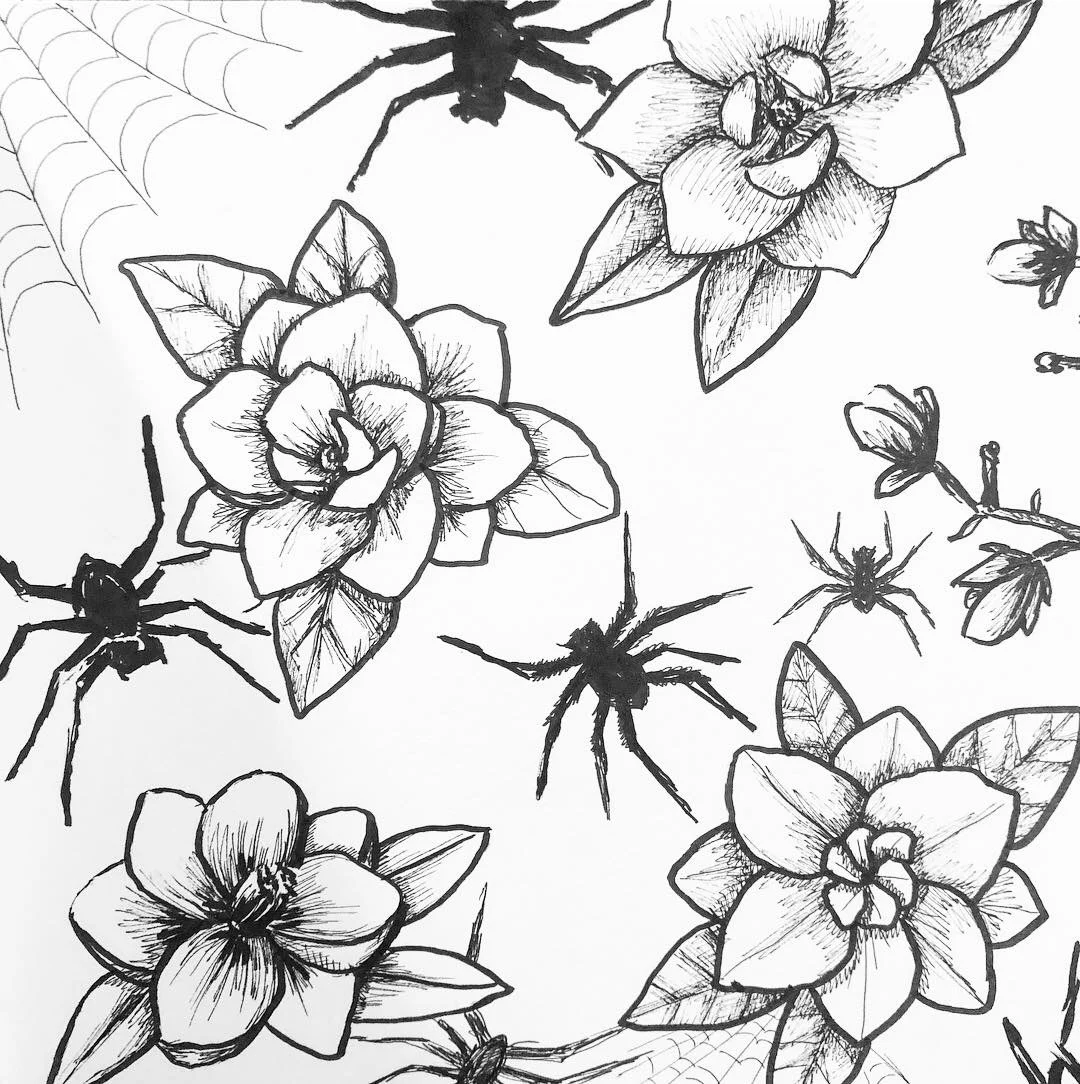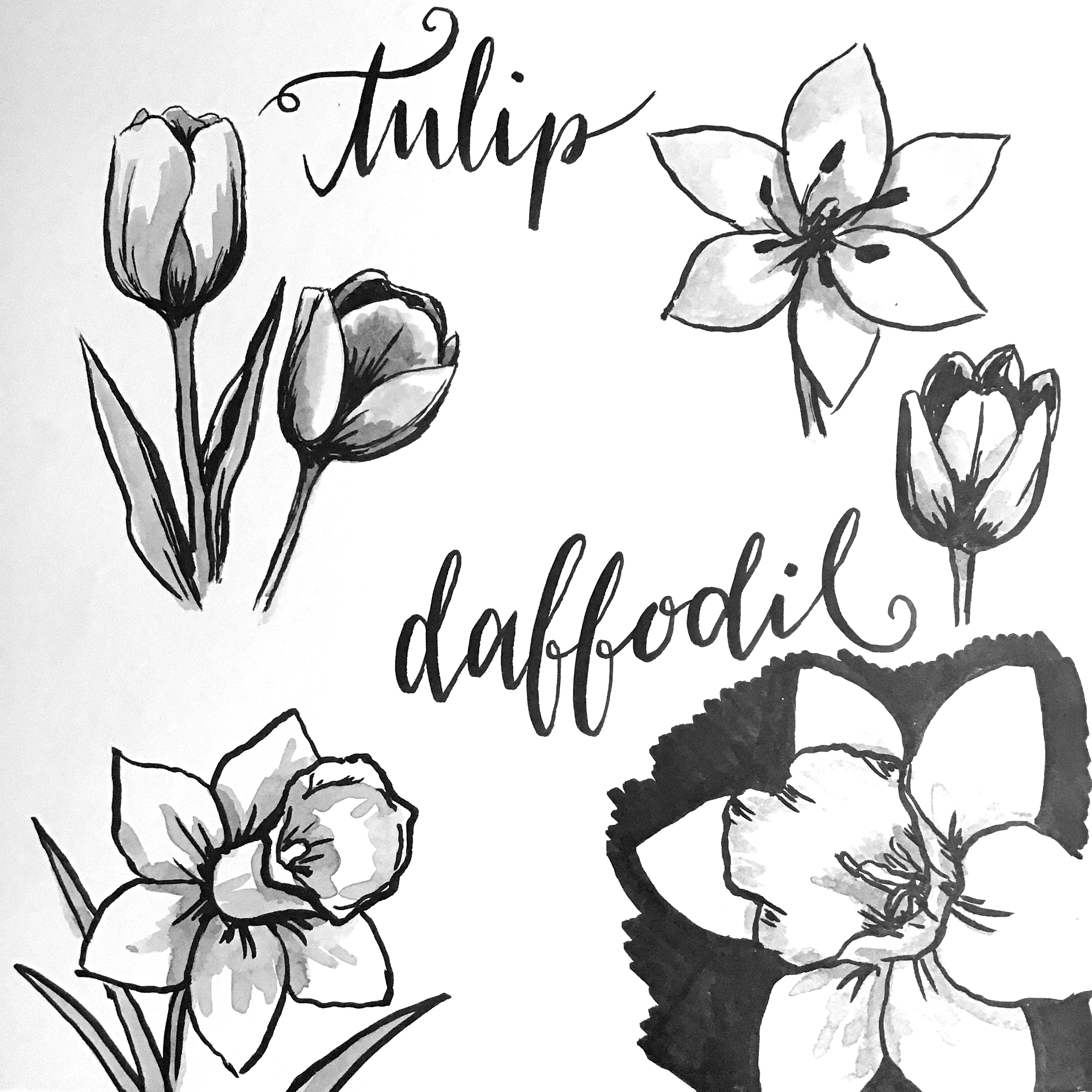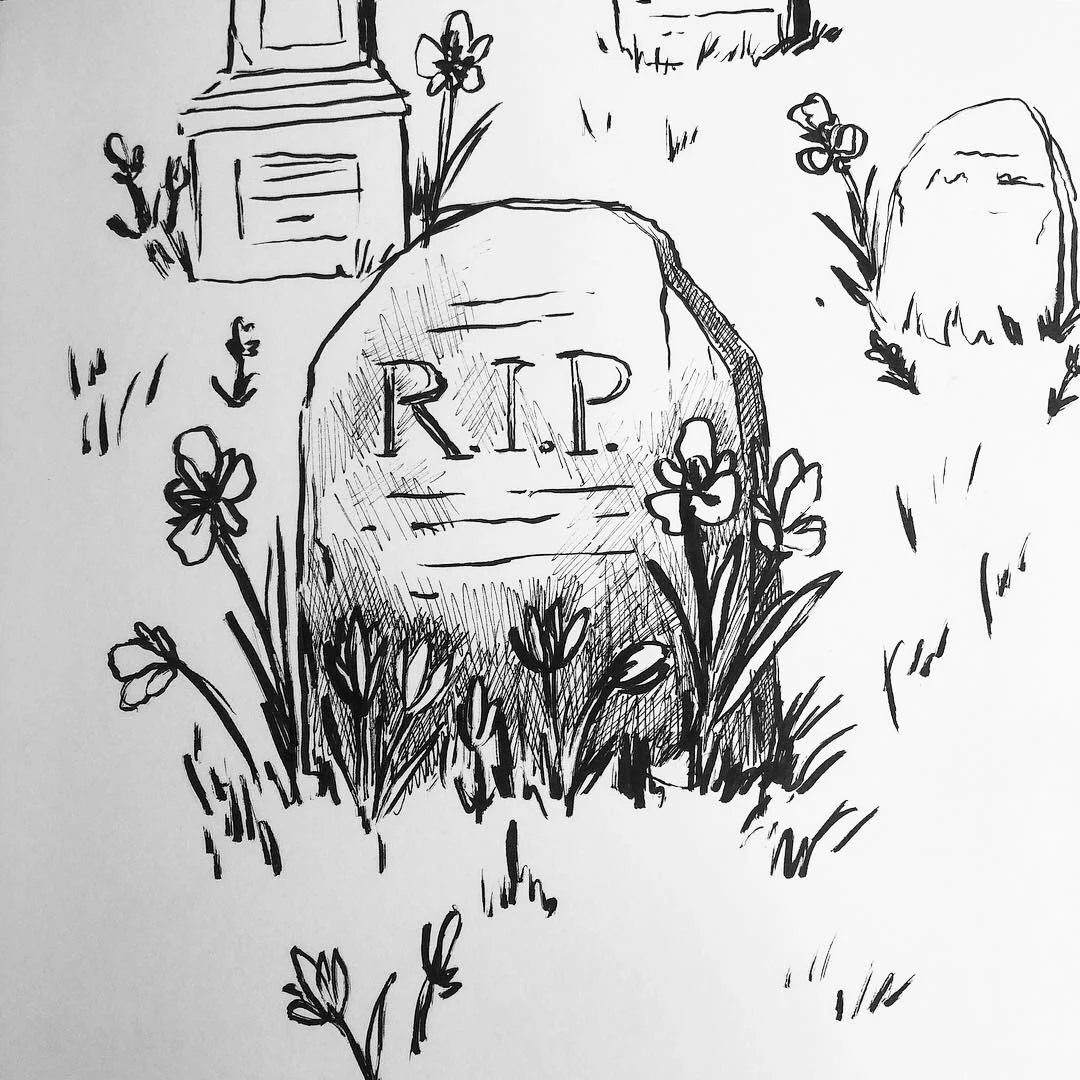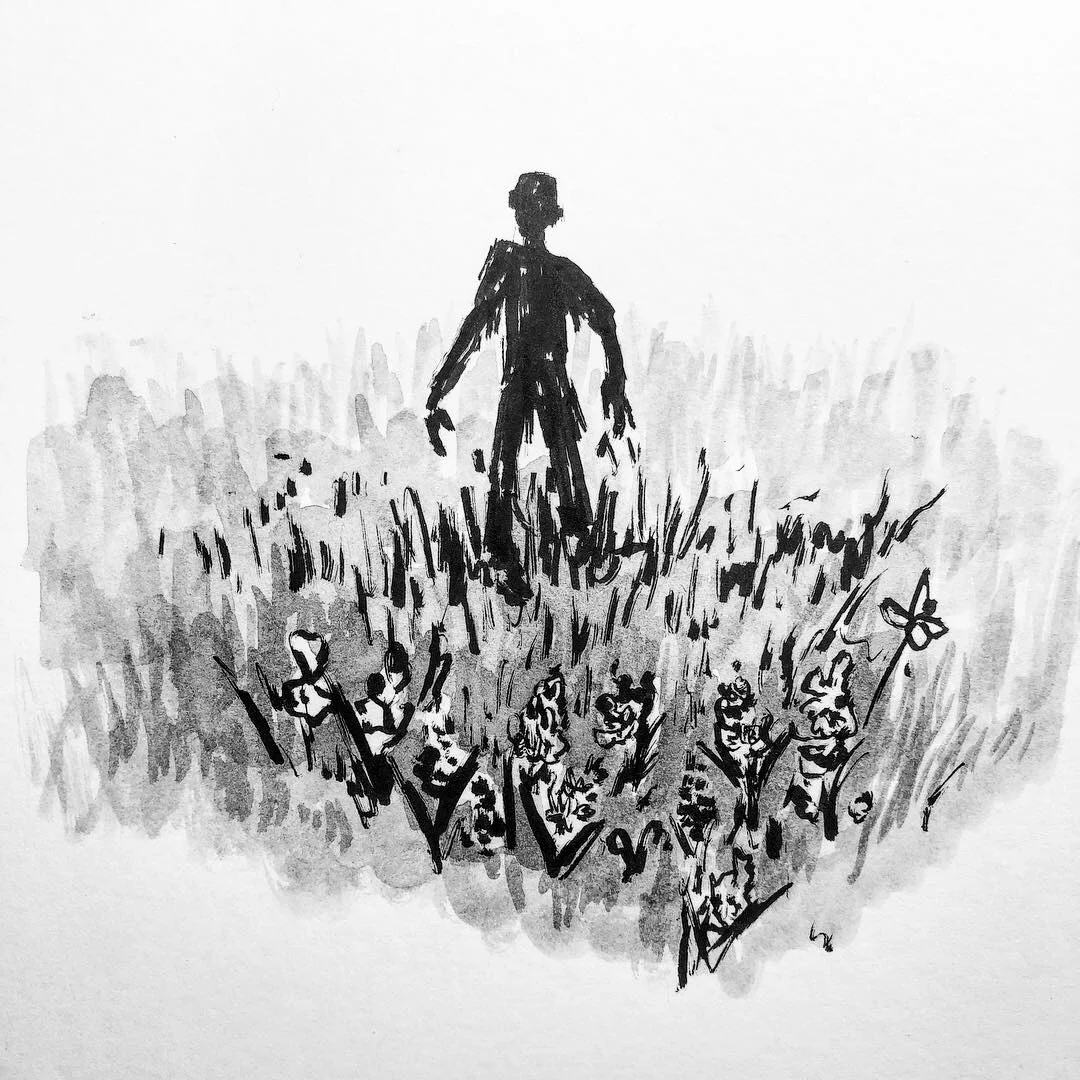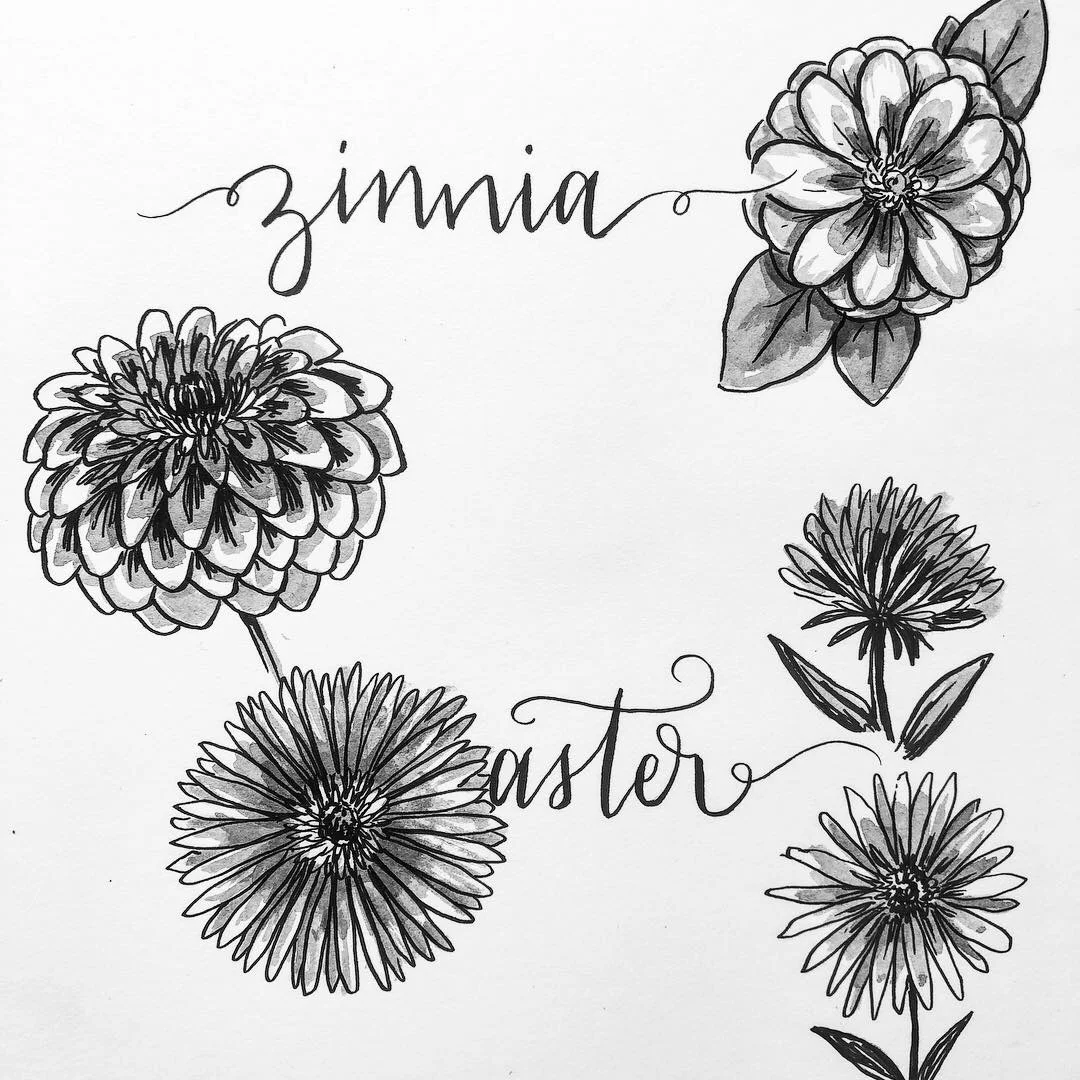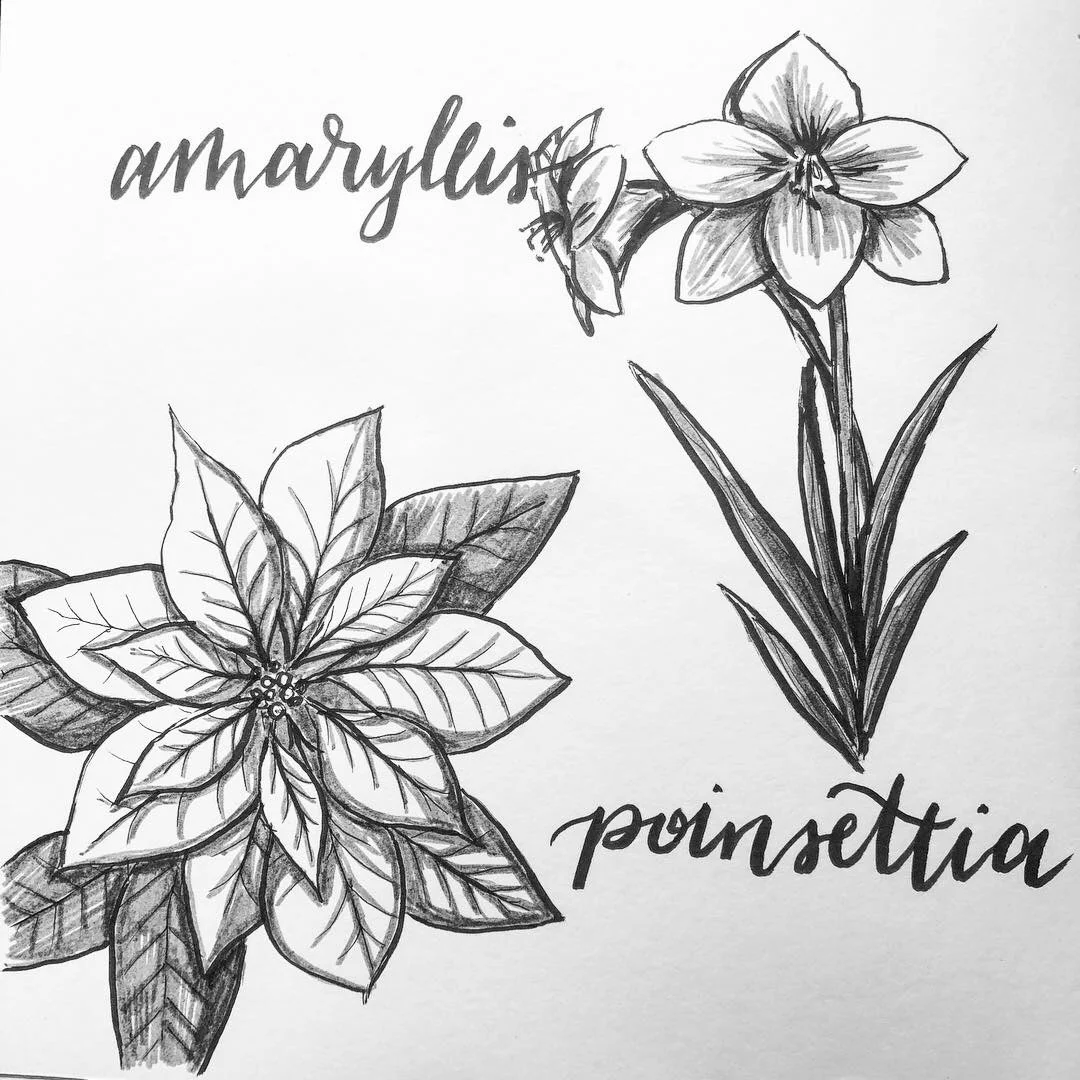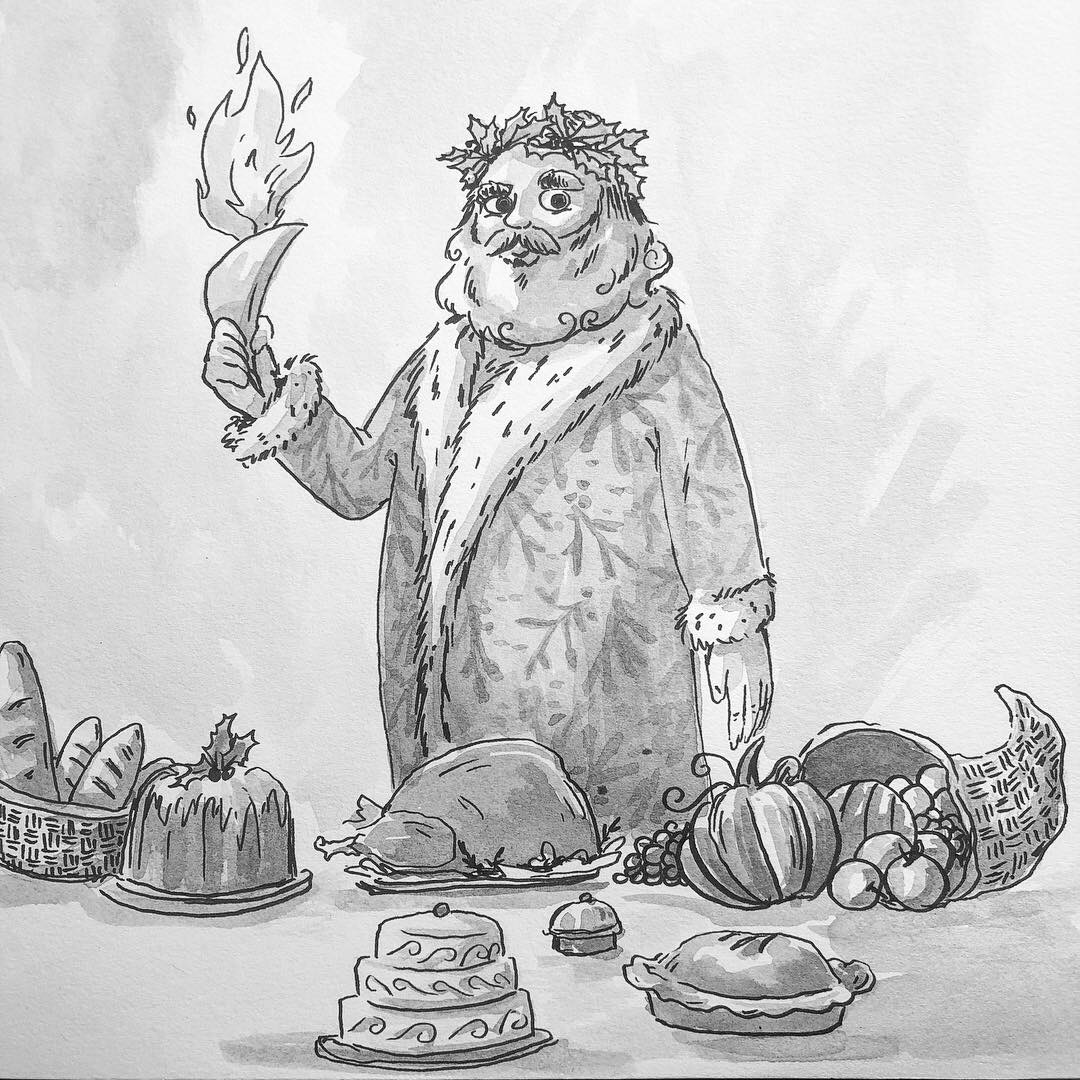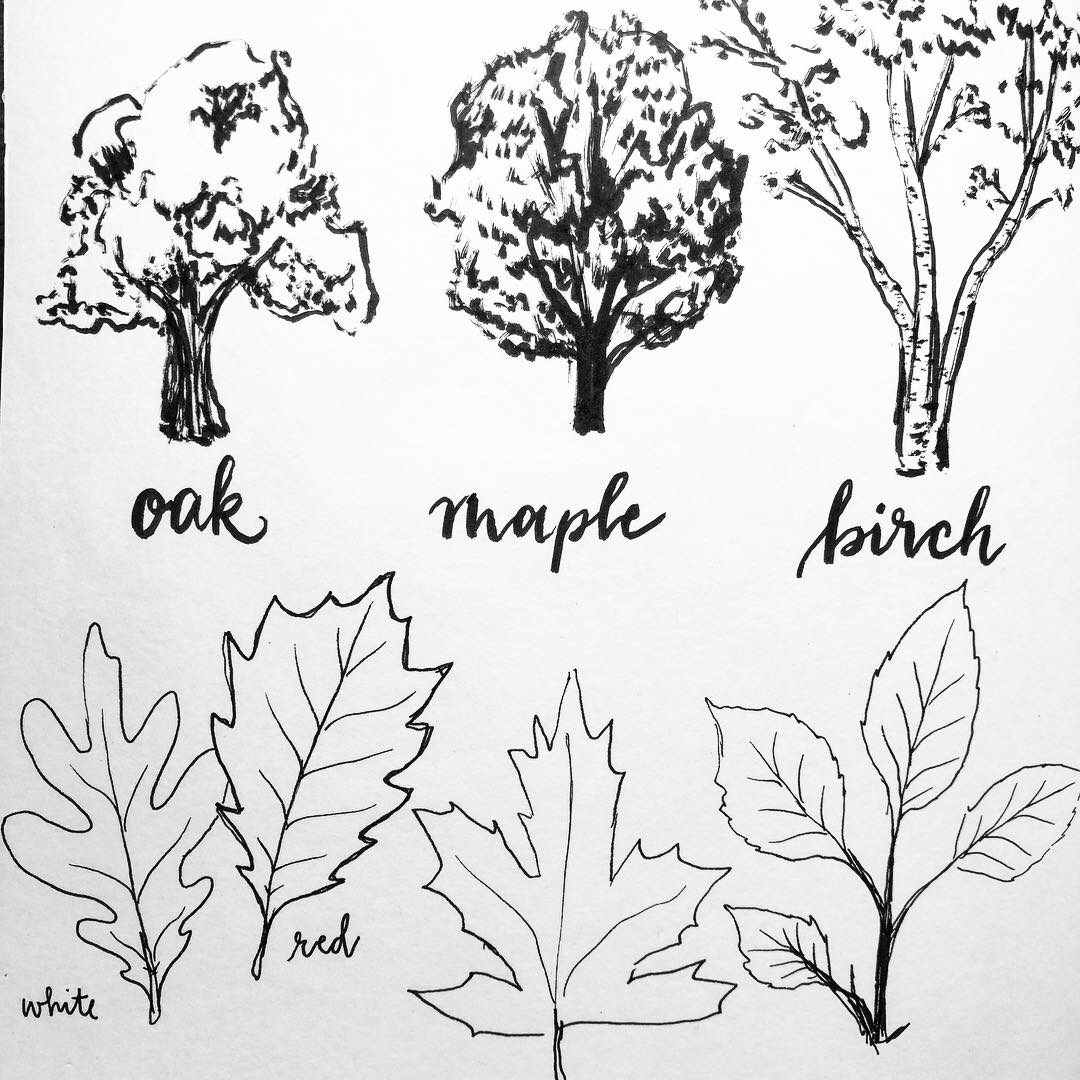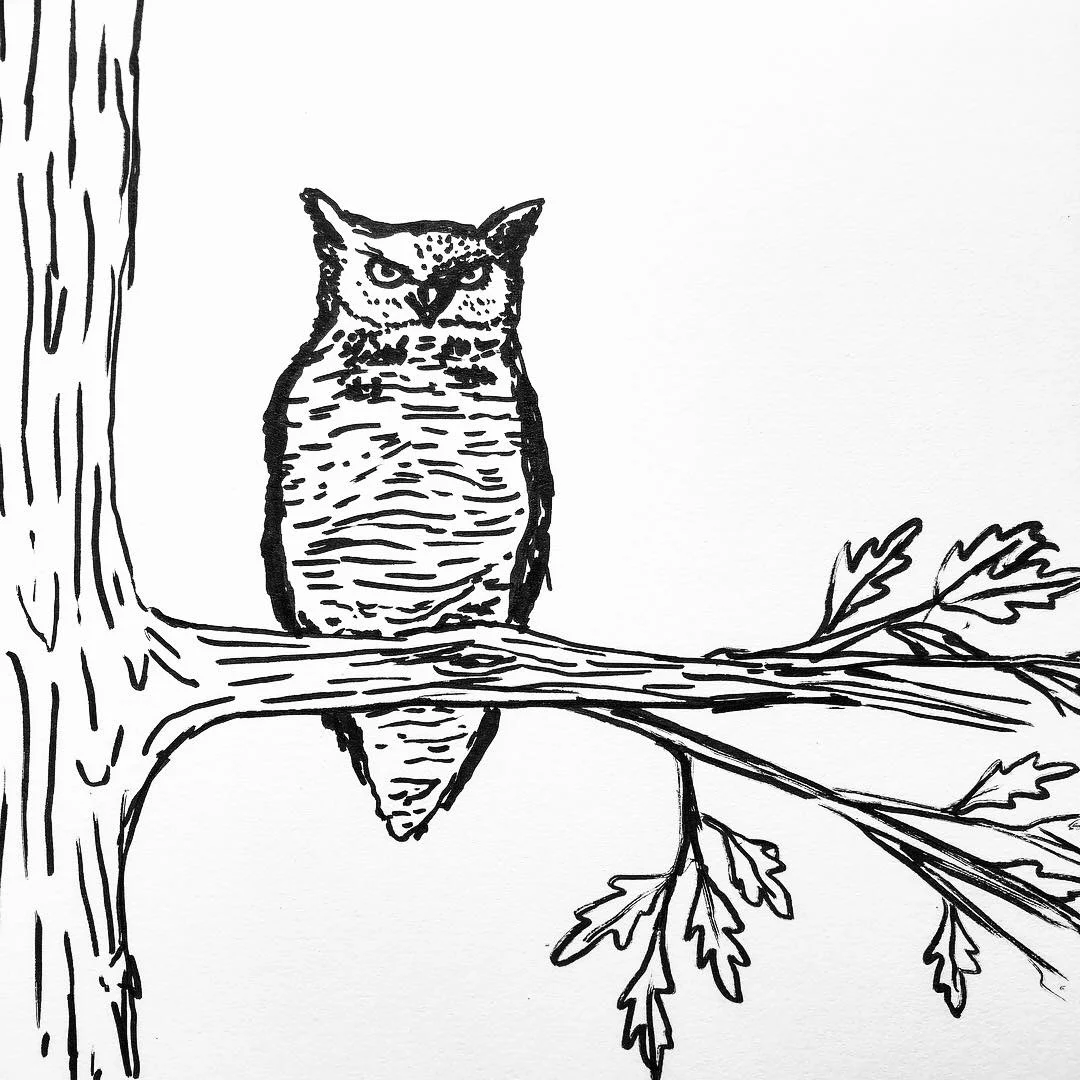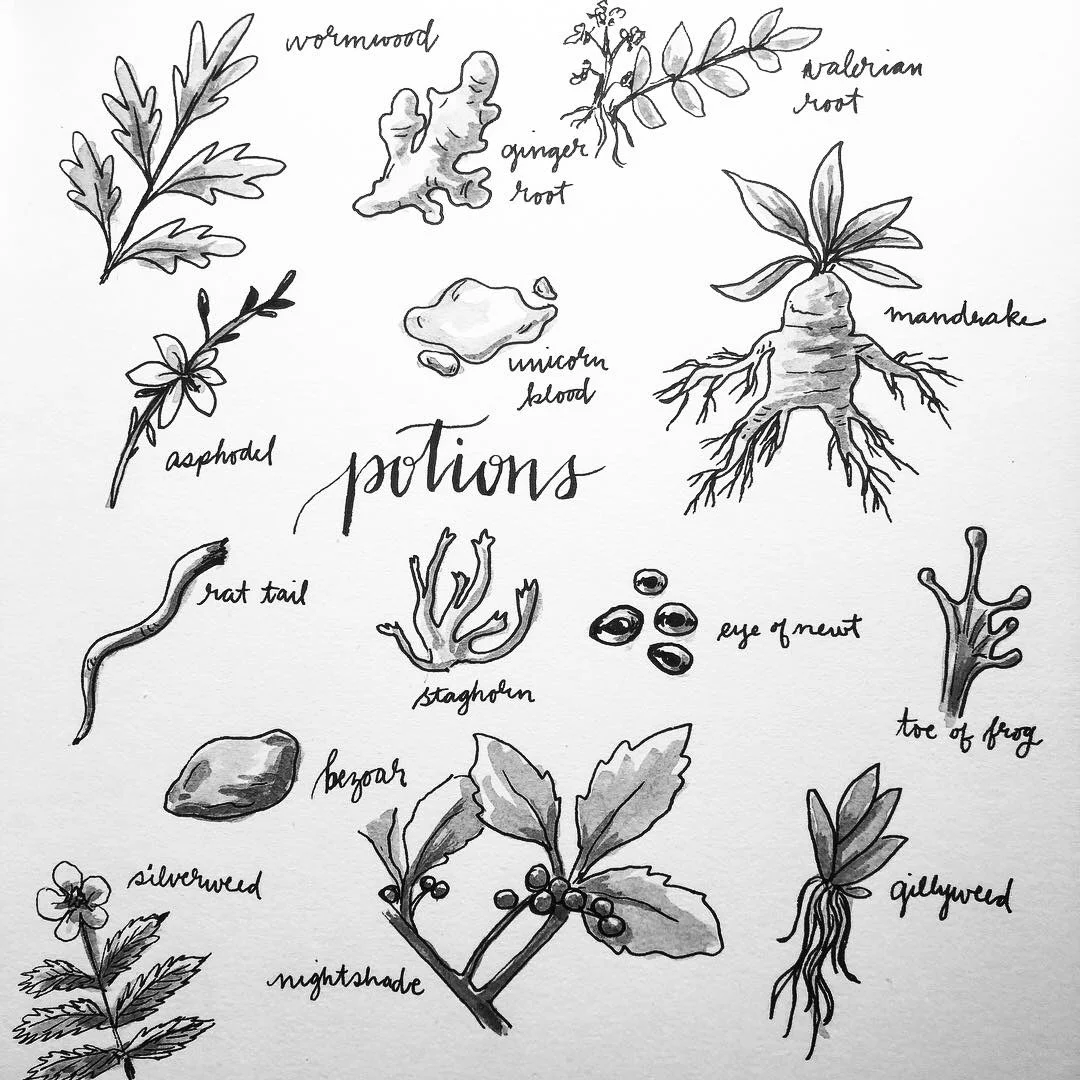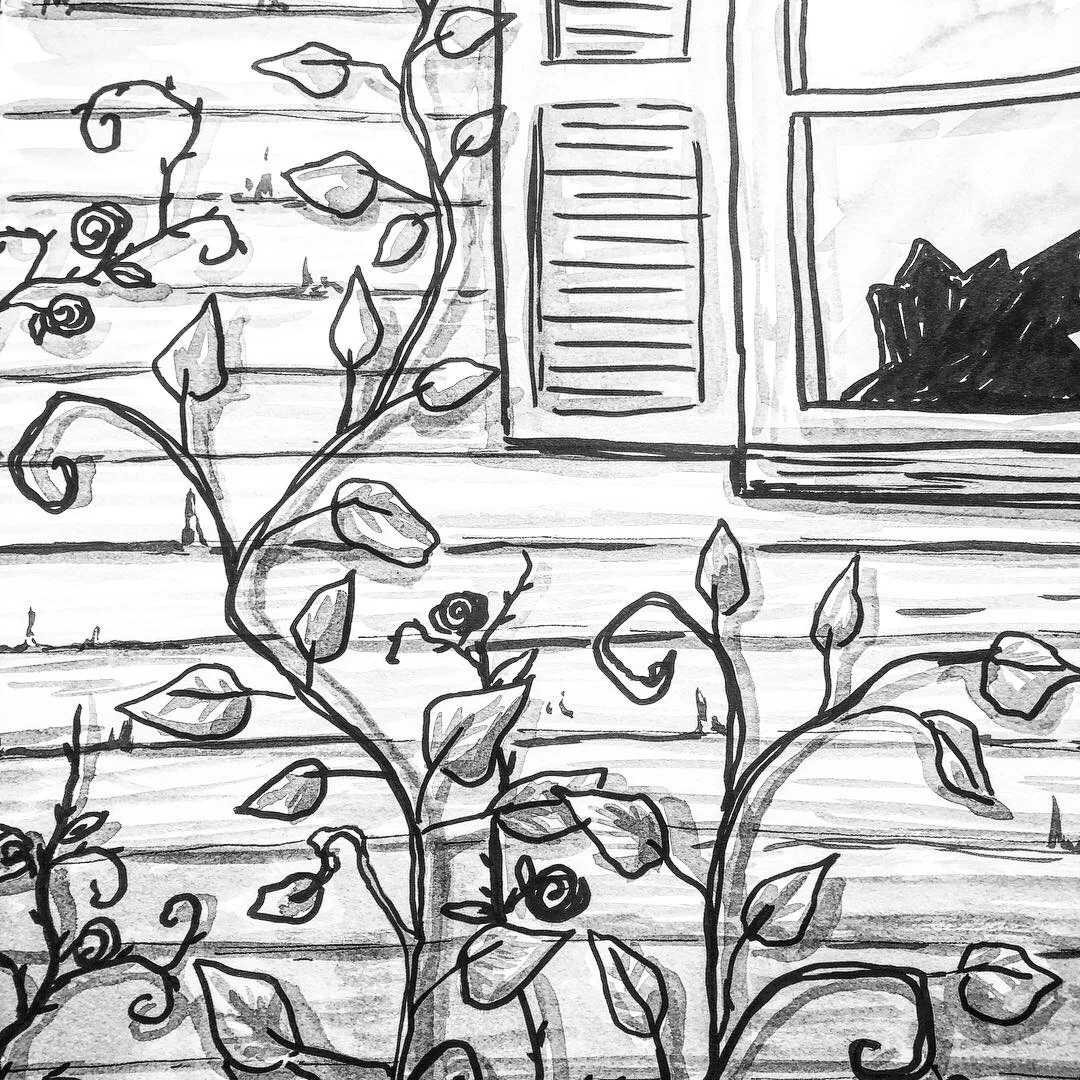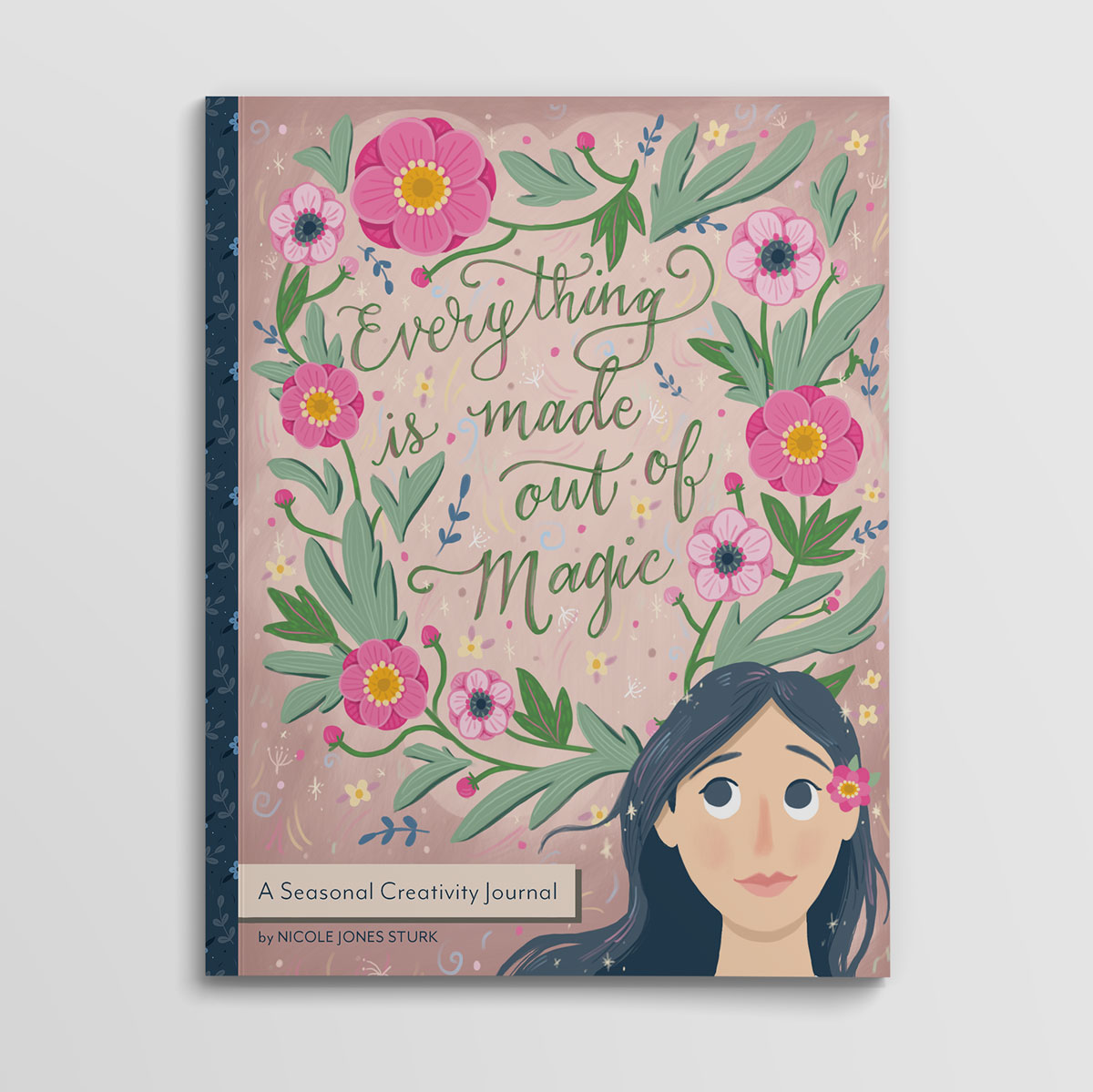1. Skipping Research
I'm just awful at this. Like many others, I'm sure, I get excited about an idea and dive right in. I barely even do any sketching! I think a lot of my patterns could be a lot better if I'd taken the time to soak in some related imagery, experimented with forms and compositions, and worked things out in sketches. Considering trends would help make my work more marketable as well. With all this in mind, I've been working this month with my Inktober project to learn about different flowers and plant structures. Since I do a lot of florals, I'm hoping this will improve my work overall.
2. Making my repeats too small
A lot of the time I make my repeats the size of Spoonflower swatches (8x8 inches), or sometimes 12x12 (a standard scrapbook paper size). Lately, I'm beginning to realize that perhaps I am making my repeat swatches too small. Having a larger size base pattern has the advantage of avoiding obvious sections of repeats within the bigger swatch. According to this excerpt from a textile handbook, repeats should be scaled to the width of the fabric (24 inches and above). This could be divided into a smaller division of the total size. Somewhere between 14 and 16 inches is common—still larger than my usual. Of course, this all depends on the end goal of your pattern and the process by which it will be manufactured. Which brings me to my next mistake...
3. Having no end product in mind
There are many questions I should be asking myself when I approach a new design: Is this design for stationery, apparel fabric, upholstery fabric, wallpaper, gift wrap, etc.? Who is my ideal audience/customer and what do they like? Mostly I just tend to draw something pretty and make a pattern out of it, but if I plan to sell my designs, I need to think beyond that. Knowing what the end goal is will inform many choices—style, scale, colors, and limitations with manufacturing, and so on.
4. Designing single patterns and not collections
My portfolio is full of single patterns that were done for challenges or quickly done for fun, and never thought of again. My approach needs to change to focus more on creating fully conceived collections. I've written about this previously. I think I have a hard time with this because of my short attention span. It is hard for me to stay devoted to one project for too long. I need to work on my artistic endurance, so to speak!
5. Not turning my work upside down
When considering all-over patterns that are meant to be viewed from any direction, it makes sense that we should make sure the patterns truly work from any view. It seems obvious, yet I've hardly ever turned my design around as I'm working. And it's so simple just to turn your paper, or rotate your digital canvas. Usually, I just place my elements in random directions and call it good, but I came to the realization one day when looking at a printout of one of my patterns that you can recognize new issues when you turn your design over. And this brings me to my final point...
6. Not printing out my patterns
I don't know how many times I've uploaded a design to Spoonflower and ordered a swatch only to find that I did not like the scale, colors, composition, or something else. I finally had an "Aha!" moment and started printing out swatches on my inkjet printer. I don't know why I never did it before—laziness? saving paper?—but it really helps to see your design printed out, especially if you work digitally. You can recognize issues that you might not see onscreen. Sometimes I just print a low quality "draft" version (because ink is ex-pen-sive), and though that won't help as much with color, you can still get a sense of the scale and overall composition of your design. (Make sure you print at 100% to get an accurate representation.)
So those are six things I'd like to work on in my surface pattern design process. I hope this is helpful to you as well! Please let me know what advice you have. I’d love to hear from you.
Sincerely, Nicole
